Birdfinding.info ⇒ Locally common in the mountains of Hispaniola. In the D.R. it can usually be found at sites such as Zapotén, Los Arroyos, Cachote, and Ébano Verde. In Haiti, the accessible locations are Pic Macaya and La Visite National Park.
Hispaniolan Trogon
Priotelus roseigaster
Family: Trogonidae
Endemic to Hispaniola, where it occurs mainly in humid montane forests, both broadleaf and pine.
Known populations are in the Massif de la Hotte, Massif de la Selle, Sierra de Bahoruco, Sierra de Neiba, Cordillera Central, and Cordillera Septentrional.
Records from Los Haitises National Park may be of wanderers from the Cordillera Septentrional rather than a local population.
Identification
Unmistakable; the only trogon on Hispaniola. Both sexes have a scarlet belly, gray throat and breast, blackish head, dark green upperparts, and white-patterned undertail.
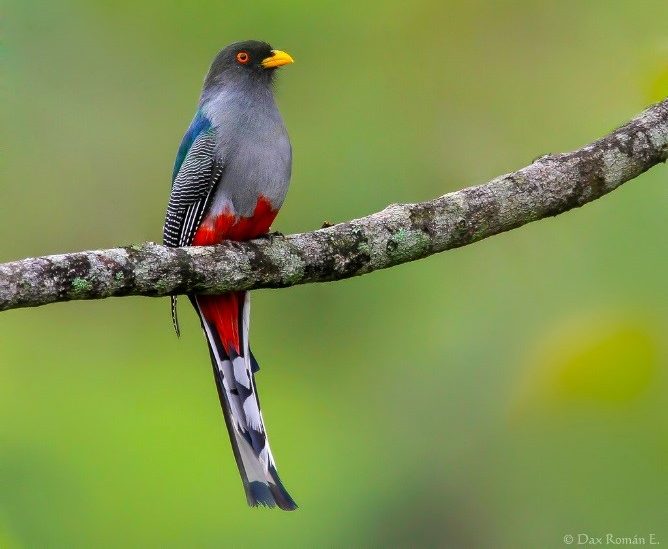
Hispaniolan Trogon, male. (Ébano Verde Scientific Reserve, Dominican Republic; July 21, 2012.) © Dax M. Román E.
The male has fine black-and-white vermiculations on the wing coverts, where the female is unmarked.

Hispaniolan Trogon, female. (Ébano Verde Scientific Reserve, Dominican Republic; March 8, 2014.) © Dax M. Román E.
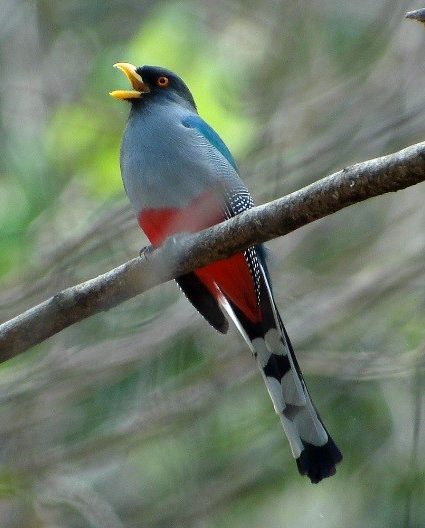
Hispaniolan Trogon, male. (Sierra de Bahoruco, Dominican Republic; April 3, 2013.) © Angie Cederlund
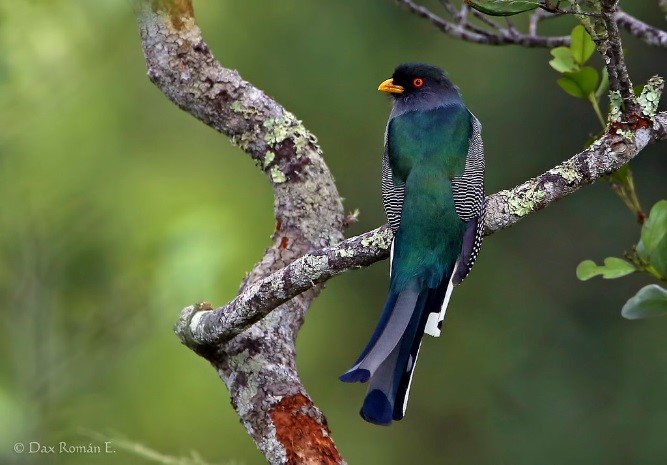
Hispaniolan Trogon, male, dorsal view. (Ébano Verde Scientific Reserve, Dominican Republic; June 15, 2013.) © Dax M. Román E.
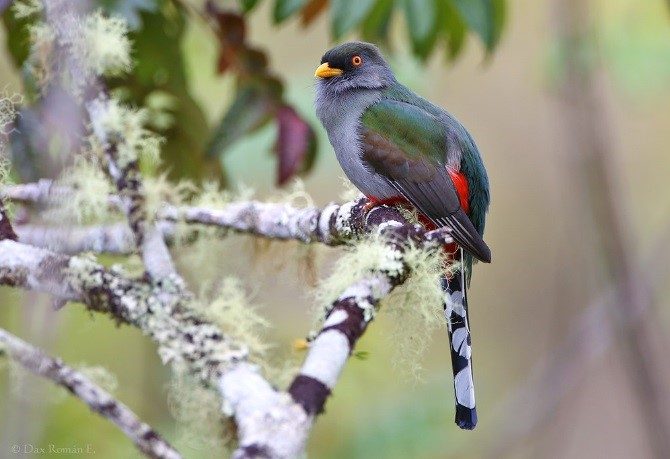
Hispaniolan Trogon, female. (Ébano Verde Scientific Reserve, Dominican Republic; March 8, 2014.) © Dax M. Román E.
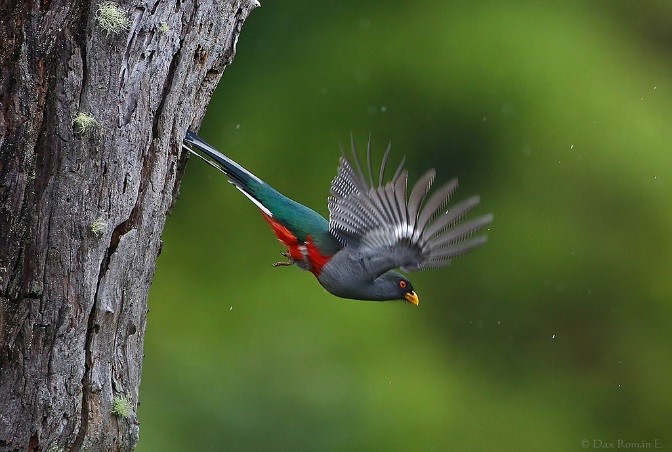
Hispaniolan Trogon. (Ébano Verde Scientific Reserve, Dominican Republic; August 30, 2014.) © Dax M. Román E.
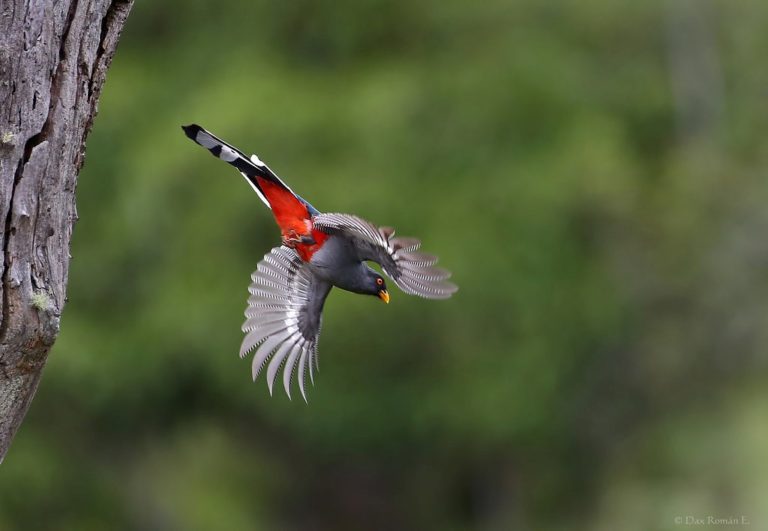
Hispaniolan Trogon. (Ébano Verde Scientific Reserve, Dominican Republic; April 27, 2014.) © Dax M. Román E.
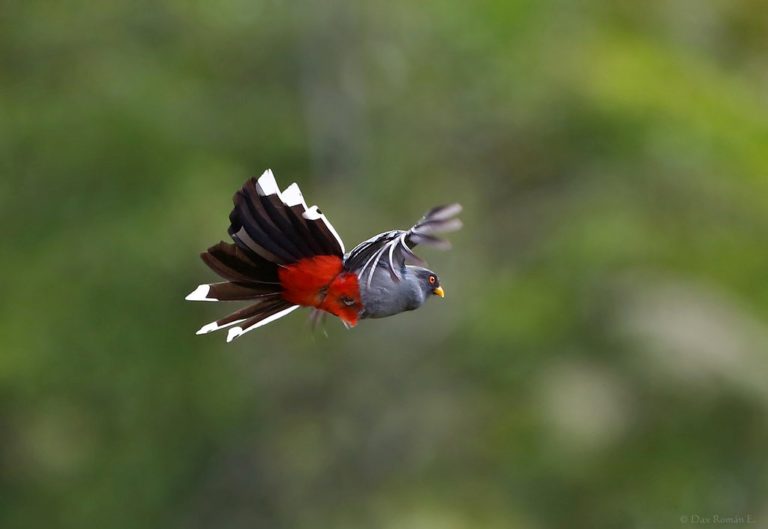
Hispaniolan Trogon. (Ébano Verde Scientific Reserve, Dominican Republic; April 27, 2014.) © Dax M. Román E.
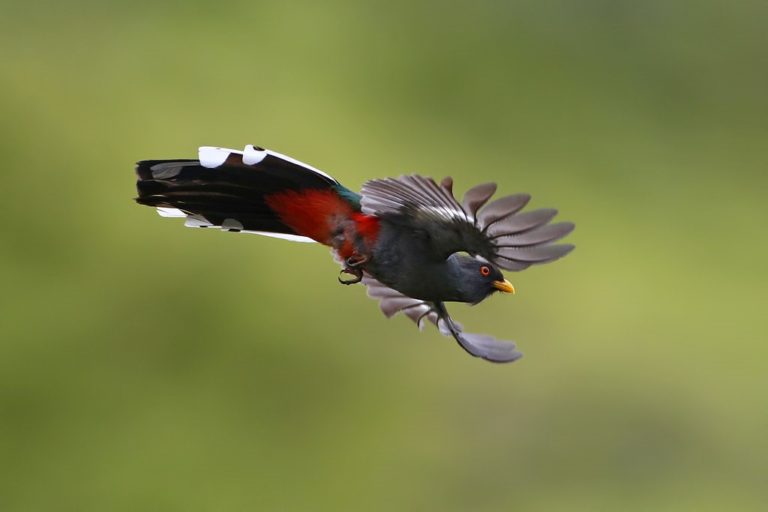
Hispaniolan Trogon. (Ébano Verde Scientific Reserve, Dominican Republic; May 15, 2014.) © Dax M. Román E.
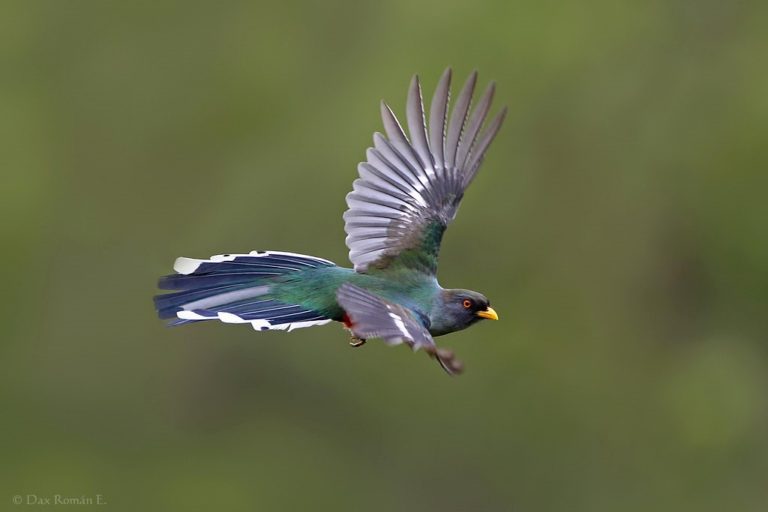
Hispaniolan Trogon. (Ébano Verde Scientific Reserve, Dominican Republic; May 15, 2014.) © Dax M. Román E.
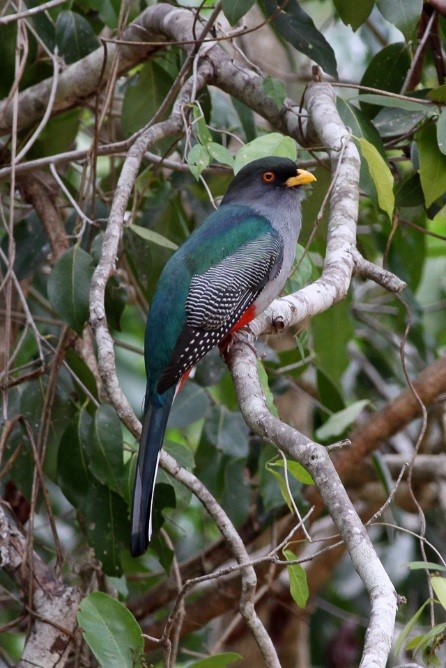
Hispaniolan Trogon, male. (Sierra de Bahoruco, Dominican Republic; March 24, 2009.) © Ron Knight

Hispaniolan Trogon. (Ébano Verde Scientific Reserve, Dominican Republic; April 27, 2014.) © Dax M. Román E.

Hispaniolan Trogon. (Ébano Verde Scientific Reserve, Dominican Republic; March 28, 2014.) © Dax M. Román E.
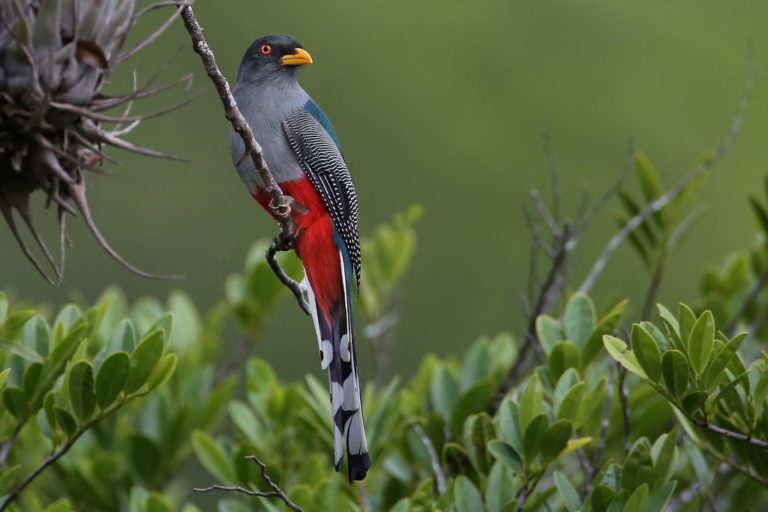
Hispaniolan Trogon, male. (Ébano Verde Scientific Reserve, Dominican Republic; June 15, 2013.) © Dax M. Román E.
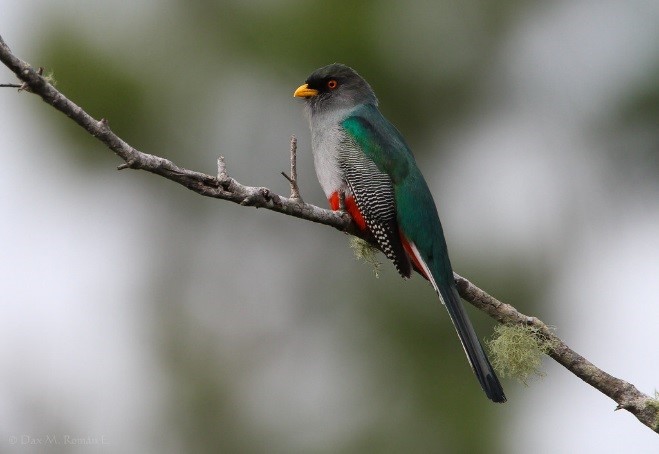
Hispaniolan Trogon, male. (Ébano Verde Scientific Reserve, Dominican Republic; May 5, 2012.) © Dax M. Román E.
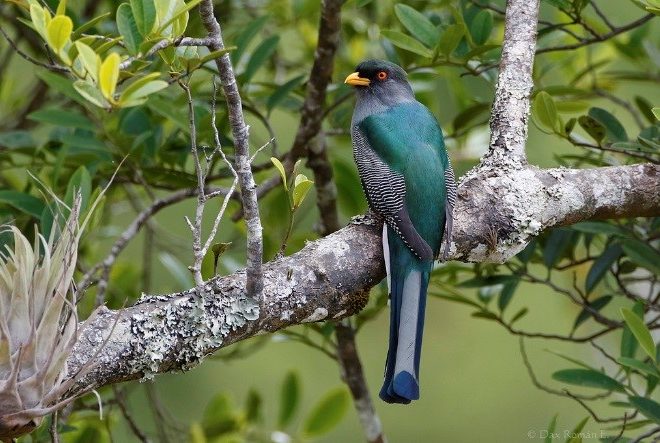
Hispaniolan Trogon, male. (Ébano Verde Scientific Reserve, Dominican Republic; May 15, 2014.) © Dax M. Román E.

Hispaniolan Trogon, male. (Ébano Verde Scientific Reserve, Dominican Republic; February 23, 2014.) © Dax M. Román E.

Hispaniolan Trogon, male. (Ébano Verde Scientific Reserve, Dominican Republic; May 16, 2015.) © Dax M. Román E.
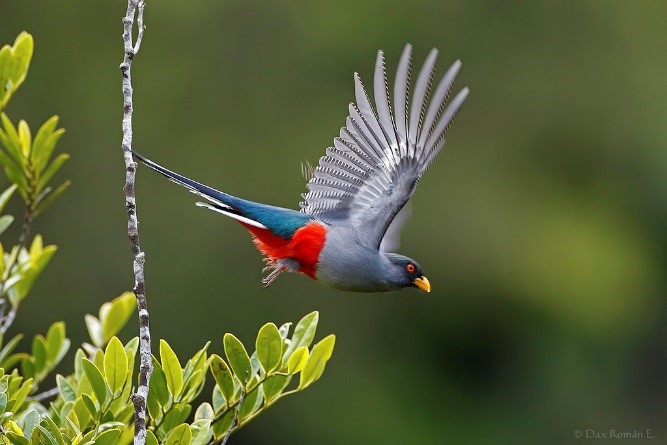
Hispaniolan Trogon. (Ébano Verde Scientific Reserve, Dominican Republic; May 16, 2015.) © Dax M. Román E.
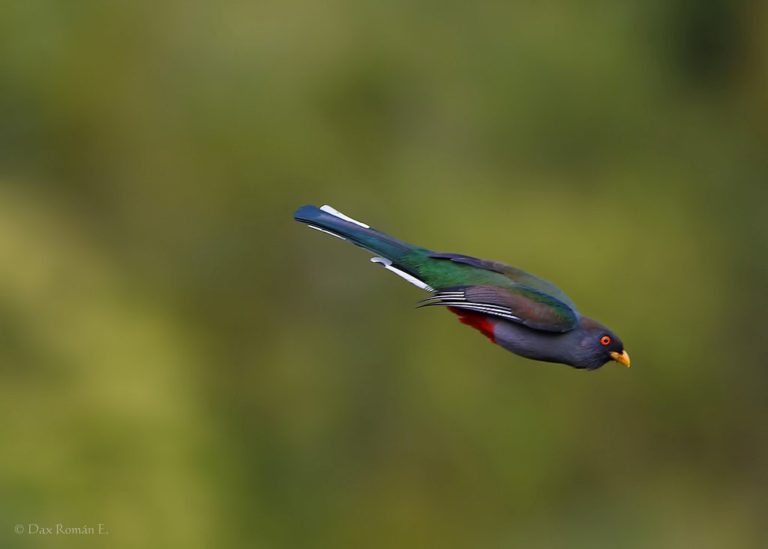
Hispaniolan Trogon. (Ébano Verde Scientific Reserve, Dominican Republic; March 8, 2014.) © Dax M. Román E.

Hispaniolan Trogon, male. (Ébano Verde Scientific Reserve, Dominican Republic; September 28, 2013.) © Dax M. Román E.
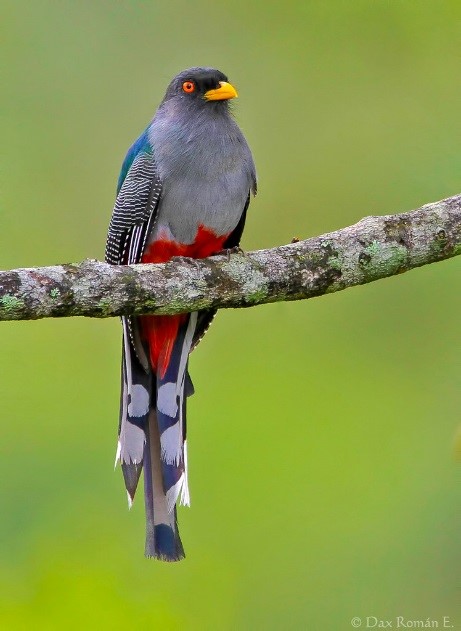
Hispaniolan Trogon, male. (Ébano Verde Scientific Reserve, Dominican Republic; July 21, 2012.) © Dax M. Román E.
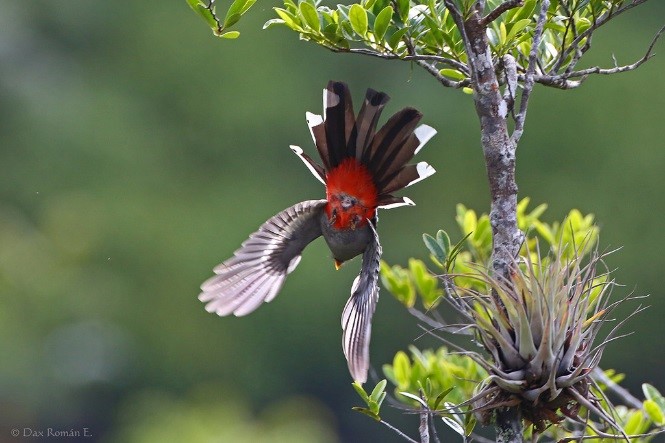
Hispaniolan Trogon. (Ébano Verde Scientific Reserve, Dominican Republic; April 27, 2014.) © Dax M. Román E.
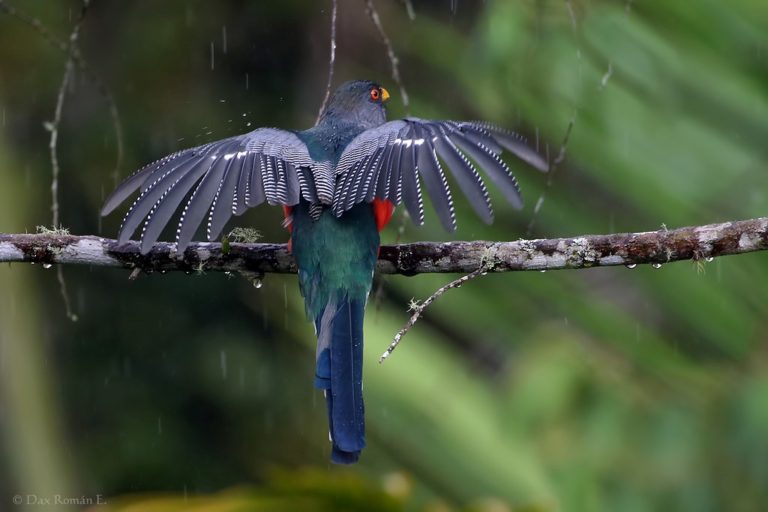
Hispaniolan Trogon, male. (Ébano Verde Scientific Reserve, Dominican Republic; September 28, 2013.) © Dax M. Román E.

Hispaniolan Trogon, male. (Ébano Verde Scientific Reserve, Dominican Republic; July 18, 2012.) © Dax M. Román E.
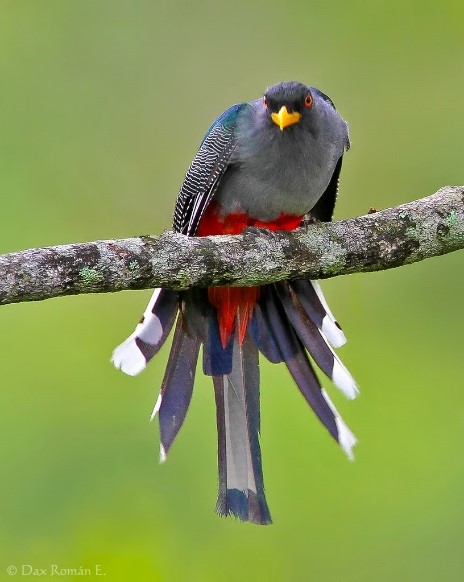
Hispaniolan Trogon, male. (Ébano Verde Scientific Reserve, Dominican Republic; July 21, 2012.) © Dax M. Román E.
Voice. Common call is cuck-craow, often followed by one or more echoed repetitions of the second note:
Notes
Monotypic species.
The national bird of Haiti.
References
Alas & Colores: Hispaniolan Trogon (Temnotrogon roseigaster), https://alasycolores.com.do/en/aves/trogon-de-la-espanola.
BirdLife International. 2018. Temnotrogon roseigaster. The IUCN Red List of Threatened Species 2018: e.T22682751A131515698. http://dx.doi.org/10.2305/IUCN.UK.2018-2.RLTS.T22682751A131515698.en. (Accessed June 19, 2019.)
Collar, N. 2017. Hispaniolan Trogon (Temnotrogon roseigaster). In Handbook of the Birds of the World Alive (J. del Hoyo, A. Elliott, J. Sargatal, D.A. Christie, and E. de Juana, eds.). Lynx Edicions, Barcelona. https://www.hbw.com/node/55714. (Accessed November 12, 2017.)
eBird. 2019. eBird: An online database of bird distribution and abundance. Cornell Lab of Ornithology, Ithaca, N.Y. http://www.ebird.org. (Accessed June 18, 2019.)
Gerbracht, J. 2011. Hispaniolan Trogon (Priotelus roseigaster), version 1.0. In Neotropical Birds Online (T.S. Schulenberg, ed.). Cornell Lab of Ornithology, Ithaca, N.Y. https://doi.org/10.2173/nb.histro1.01.
Latta, S., C. Rimmer, A. Keith, J. Wiley, H. Raffaele, K. McFarland, and E. Fernandez. 2006. Birds of the Dominican Republic and Haiti. Princeton University Press, Princeton, N.J.
Raffaele, H., J. Wiley, O. Garrido, A. Keith, and J. Raffaele. 1998. A Guide to the Birds of the West Indies. Princeton University Press, Princeton, N.J.

